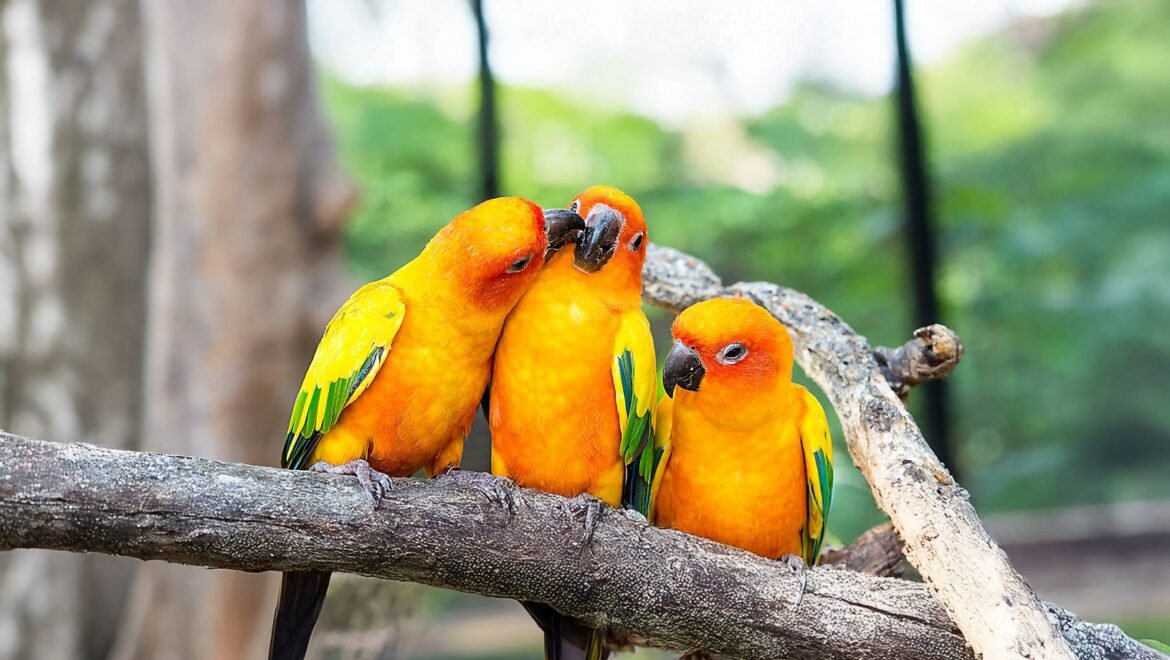Parrots are among the most fascinating and intelligent birds in the world. With their vibrant feathers, playful personalities, and remarkable ability to mimic human speech, parrots have captured the hearts of bird lovers for centuries. From tropical rainforests to cozy homes, these feathered creatures continue to amaze with their charm, intelligence, and character.
A Glimpse into the Parrot Family
Parrots belong to the bird order Psittaciformes, which includes over 400 species such as macaws, cockatoos, parakeets, conures, and lovebirds. They are found in warm climates, particularly in Central and South America, Africa, Asia, and Australia.
Parrots are known for their:
- Bright plumage in shades of green, red, blue, and yellow
- Strong, curved beaks for cracking nuts and seeds
- Zygodactyl feet (two toes forward, two backward) for gripping and climbing
- Social behavior and ability to form strong bonds with humans and other birds
Intelligence and Communication
One of the most outstanding features of parrots is their intelligence. Parrots are problem-solvers, quick learners, and excellent mimics. Some species can learn hundreds of words and use them in context, displaying a level of understanding rare in the animal kingdom.
- African Grey Parrots are especially famous for their speech ability and comprehension.
- Amazon Parrots are known for their clarity of voice and sense of humor.
- Budgerigars (budgies) are small but can develop large vocabularies.
Parrots don’t just mimic for fun—they often use speech to communicate with their human companions, seek attention, or express emotions.
Life as a Pet Parrot
Parrots can be delightful companions, but they require dedicated care and attention. They are not low-maintenance pets and need:
- Mental stimulation: Toys, puzzles, and daily interaction are essential to prevent boredom and behavioral issues.
- Social interaction: Parrots are flock animals. Without companionship, they can become lonely or depressed.
- Proper diet: A mix of seeds, pellets, fruits, and vegetables supports good health.
- Clean environment: Their cages must be spacious and cleaned regularly, with perches, swings, and safe chewable items.
- Regular vet visits: Especially for larger parrots, who can live 30 to 60 years or more.
Because of their long lifespans and complex needs, parrots are a long-term commitment—almost like having a child.
Parrots in the Wild
In the wild, parrots are essential to the environment. They:
- Disperse seeds as they feed, helping forest regeneration
- Control insect populations by eating pests
- Form complex flocks with strong family bonds and vocal communication
Sadly, many wild parrot species are now endangered due to habitat destruction, illegal pet trade, and hunting. Some, like the Spix’s Macaw, have become extinct in the wild.
Conservation and Ethical Ownership
Parrot lovers must support responsible pet ownership and conservation efforts. Buying parrots from illegal breeders or poachers contributes to the decline of wild populations.
Instead, consider:
- Adopting from bird rescue centers
- Supporting conservation organizations that protect wild habitats
- Educating others about ethical care and the importance of preserving parrot species
Fun Facts About Parrots
- Parrots can see ultraviolet light, unlike humans.
- They use their feet like hands, holding food while they eat.
- The Kakapo, a flightless parrot from New Zealand, is one of the rarest birds in the world.
- Parrots often form lifelong pairs and show affection by preening each other.
Conclusion
Parrots are truly extraordinary birds—brilliant, beautiful, and bursting with personality. They bring joy, laughter, and companionship to those who care for them with love and respect. Whether admired in the wild or cared for as pets, parrots deserve our attention, protection, and admiration. Their colorful presence is a reminder of nature’s creativity and the deep connection we share with the animal world.
